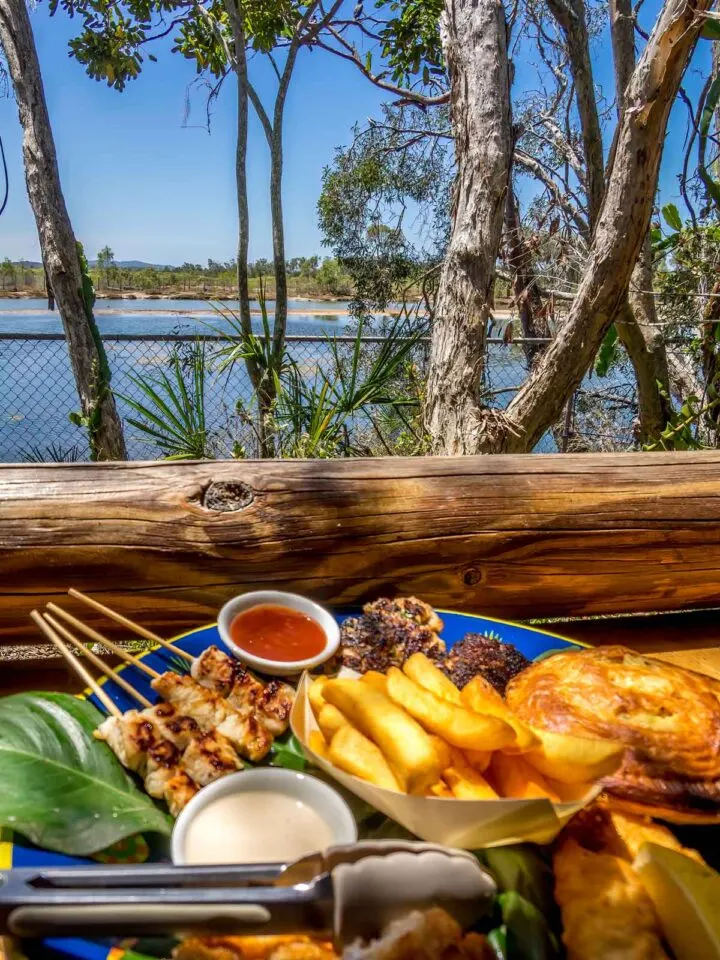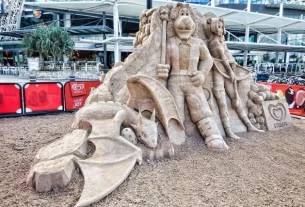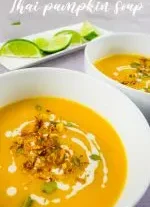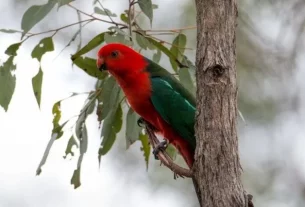We discovered the Koorana Crocodile Farm while researching different things to see while staying in Yeppoon. Saltwater crocodiles both scare and fascinate me in equal measure but as we plan to spend increasingly more time above the Capricorn line in the next few years I was excited to learn much more about them.
Some of the key services provided by the Koorana team are educating the public and training those who work in crocodile territory to be safe in that environment. We definitely learned quite a few new things during this visit. It’s a small group tour, questions are encouraged and the focus is principally on educating but our group who ranged in age from those in pushchairs to grey nomads all appeared to find it pretty entertaining too.

The facility is also a working farm, the primary product being skins destined largely for the European market while crocodile meat is a secondary product sold through a range of suppliers. In the area you can try it on-site for lunch, top local restaurants like the Waterline use it, the butchers in Yeppoon will have it occasionally and other suppliers like the Keppel Sands Co-op are stockists.
Koorana is a small family business, a local employer and a unique addition to the regions farming community. They are also a tourism business and like most in Australia, they have had a tough couple of years so this is an interesting one to support while enjoying a fun day out.
Read more: Things to do in and around Yeppoon on the Capricorn Coast
About the farm
Koorana is an Aboriginal word that means to bring forth young, which is exactly what the farm has done for over 40 years now. The property is located in Coowonga about 20 kilometres south of Yeppoon and covers 280 acres with around half of it inundated at high tide feeding the tidal saltwater lagoons.
Koorana was established in 1981 and was the first commercial crocodile farm in Australia. John and Lillian Lever gained the knowledge and experience they needed to catch, managed and farm crocodiles with the tribesmen in New Guinea. Later, when they returned to Queensland they established Koorana.

Being first movers in any industry has its challenges and while Australia has a strong farming history at that time it didn’t have regulations for crocodile farming so in the early days they operated under a beekeeper licence. Getting started they were asked to relocate problem crocodiles from populated areas in Queensland, several of these found their home in the ponds on the farm becoming some of the original breeding stock.
Today crocodiles are bred on the farm. Eggs are collected and incubated for 87 days prior to hatching. The temperature of the incubator decides if the hatchling will be male or female and 80% of those raised here at Koorana are male, they have better survival rates so it makes commercial sense.
We were fortunate to meet both John and Lillian on our visit but the farm management is now being handed over to the next generation to continue on in the family.
The crocodile tour
There are two tours a day at Koorana, we joined the morning one but there is also an afternoon option if that suits your schedule better. The tour focuses on understanding and respecting crocodiles and what it means to be in their territory.
The farming business is kept entirely separate from the tour, you don’t go behind the scenes to the incubation areas where the young crocodiles are housed but you will get to meet a young one at the end of the tour and take a photo with it if you want to.
We start out meeting some of the big boys and their girls in the large ponds near the entrance. We’d arrived a bit early and stood and stared into the pond for about 15 minutes before the tour hoping to spot a crocodile. Several egrets wandered around in the shallows on the far side, black kites and a white-bellied sea eagle flew overhead but we saw no crocodiles. We were quite convinced the pond wasn’t in use.
After our safety briefing we lined up along another side of the apparently empty pond, there was no movement at all until the moment the water erupted, a huge crocodile coming from nowhere to claim his chicken breakfast from mid-air. It turns out that there are several crocodiles in this pond as Cassanova has several girls sharing his digs.
We turned to another pond and are shown where to watch for the crocodile to likely appear this time right near the edge. We’re told it’s one of his favourite lurking spots but we still don’t spot the slightest indication anything is there just below the surface until breakfast is thrown through the air and is snatched by another set of powerful jaws amid a whole lot of thrashing.

I’d thought I was very wary of waterways in croc country, quite likely I’m considered a bit on the paranoid side, but evidently, no matter how closely I’m studying the water, I’m still not going to see a croc unless he wants me to.
Fortunately, a bit further into the tour our guide Shay points out a few things to watch for that indicate crocodiles could be nearby. The first is a crocodile nest, you could easily mistake the nest itself for one scratched up from fallen leaves by an enthusiastic brush turkey but we learn that the thing to watch for is the nearby wallow that catches fresh water for the crocodile to drink and the slide, a worn area where it consistently enters and exits the water. A nesting female crocodile will want all three in close proximity.
The breeding crocodiles are out in the large ponds and lay their eggs in these nests, the Koorana team then have the somewhat daunting task of collecting the eggs to transfer to the incubators. If you’re here at the right time of the year, during summer, you might even get the chance to see that process take place.
The nest can’t be cut off from the parent crocodiles so the team need to be quick but also thorough. The fences keep in the adult crocodiles but a baby could certainly make its way through the wire mesh to freedom so you don’t want any escapees.

Crocodiles can live a long time, 80 to 100 years in the wild and reach an impressive size. The largest recorded in Australia was 8.6 metres in the 1950s but anything over 4 metres is now considered a big croc.
Rocky was one of the early crocodiles to be captured and brought to the farm in 1982. At that time the breeding stock was made up of ‘problem’ crocs that needed to be removed from populated areas. He was a big boy at 5 metres and lived on the farm for over 25 years. We met two of his also impressively sized offspring on the tour, Cassanova and Blondie.
We see several more crocodiles as we continue on the tour and learn the difference between fresh and saltwater crocodiles. I also learned that they do need to drink fresh water reasonably regularly so while they have been recorded travelling as far as Indonesia from Australia, they tend to make their territory on the rivers and estuaries rather than out on the reef.

At the end of the tour is the bit I’ve been waiting for, you get to wrangle a crocodile. Ok, it was actually a chance to hold a little 2-year-old crocodile but he did wriggle a tiny bit. Your guide takes photos on your own phone or camera if you want and was good enough to take a few to make sure you and your cuddly croc companion end up with something you are both happy with.
I was quite surprised that this little guy was already 2 years old and even at 10 years they are only around 1.5 metres long.
Lunch at Koorana
There is a restaurant at Koorana and you can add lunch either before or after your tour but it’s not open for casual bookings. The restaurant area has large tables indoors and smaller ones outside on the covered deck overlooking the ponds.
I’d heard the crocodile pie was a must to try. With a creamy and flavourful white wine sauce and flakey golden pastry, it was good advice but we went with the tasting platter. It includes not only the pie but is a showcase of different parts of the crocodile presented in ways that take advantage of the different cuts.
The tail medallions or steaks with a light spice rub are the most tender part, there were also kebabs and herbed burger patties with a choice of sauces. Crocodile meat doesn’t have a strong flavour but I wouldn’t say it tastes like chicken either. The texture is most similar to white meat, pork or chicken, but the flavour is delicately ocean not fishy, perhaps a little like calamari.

The restaurant is a great opportunity to try crocodile prepared by someone who really knows how to get the best out of it. However, there are other lunch choices including a vegetarian option if you prefer.
Read more: Cafes, Restaurants and other foodie finds around Yeppoon
If you are thinking a trip out to the Koorana Crocodile Farm might be on your itinerary next time you are on the Capricorn Coast you can check their website for tour times and current ticket prices. We highly recommend booking in for lunch either before or after the tour, especially if you haven’t eaten crocodile meat before. The meal was delicious and zero food miles is not something we get to enjoy often enough.
You will find Koorana Crocodile farm at 65 Savages Rd, Coowonga QLD 4702



